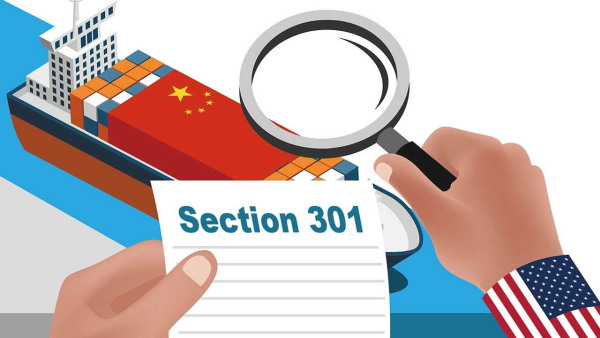On 29 December 2021, China’s State Council released a white paper on China’s export control regime, laying out China’s policy objectives as it expands and modernizes its dual-use export control regime.
In this paper, the Chinese State Council has articulated its intention to promulgate and administer a “fair, reasonable, and non-discriminating export control system.” Also of note in the perambulatory language is China’s asserting its standing as a permanent member of the U.N. Security Council and the “largest trader and manufacturer of goods.” In addition, China’s stated “committe[ment] to the principals of safeguarding world peace, national security, and regional security by improving export control governance.” Recognizing these factors, China’s new export control regime is focused on a so-called “holistic” approach to national security, which incorporates multiple layers of Central and provincial level government enforcement, data analysis, and corporate social credit information.
Another interesting general statement in the perambulatory text is a reference to technology sharing apparently aimed at US export controls and the increased restrictions placed upon Chinese end-users under the US Export Administration Regulations. Specifically the State Council states that “with deepening globalization and more technologies emerging, China calls upon all countries to promote inclusive sharing of the benefits of scientific and technological developments to increase human wellbeing.”
Beyond these more general statements, we would like to make particular note of the following:
- The State Council pointed out that license applications can come from any part of China and administration will strike a balance between export promotion and export control. This implies that there may be quantitative or other restrictions on certain technologies that may be relaxed for exports from certain areas, such as those designated for economic development and reform.
- Certain technologies and articles for export will require end-user and end use controls that will require certificates issued by the local governments where the overseas buyer is located as well as the Chinese embassy or consulate located within that jurisdiction. This is likely to be a very time consuming and cumbersome process, which may border on almost entirely unfeasible.
- China will issue general licenses that will enable multiple exports to multiple destinations and end-users over the effective period of the general license.
- The enforcement authorities will have the power to seize items being exported as well as check bank accounts and seize assets as part of any enforcement action.
- Illegal acts under the export control laws will affect the social credit score of the offenders.
- Intermediate service providers such as freight forwarders, customs brokers, and third party e-commerce platform providers will be held responsible for enforcing export control compliance of the shippers and principals to which they provide services.
- Enforcement will be the responsibility of the General Administration of Customs in conjunction with the Ministry of Public Security and provincial level security agencies.
- The State Council devoted approximately one third of this white paper to describing the importance of internal compliance policies, responsible compliance procedures and self-governance in export control compliance. This dovetails with the specific guidance on internal compliance programs issued by the Ministry of Commerce and the General Administration of Customs in June 2021 (any questions regarding which can be directed to me).
It is important to point out that MOFCOM has, effective from 1 January 2021, adopted the catalogue of dual-use items and technologies (traditionally issued pursuant to the Administrative Measures for the Import and Export License of Dual-Use Items and Technologies (“Dual-use Measures”)), effectively bringing this dual-use list within the scope of the export control law. The dual-use list is updated on a yearly basis and the latest list covers items and technologies adopted from regulations relating and applicable to, amongst others, nuclear products; non-nuclear materials used for nuclear materials; nuclear equipment and reactors; missiles; biological products; controlled chemicals; precursor chemicals; radioisotopes and radiation devices; encryption items; specific civilian items; as well as related equipment and technologies. However, this list is far from a comprehensive Wassenaar Arrangement based list.
Moreover, China’s controlled items and technologies are identified based on PRC tariff codes accompanied by certain technical description or parameters. As a result, the most common challenge faced by clients in complying with the export control law in China remains the product screening process. The Export Control Classification Number (ECCN) for dual-use items that multinational businesses are accustomed to using is not applicable in China. It remains to be seen whether China intends to update its regime to adopt ECCN classification in the future for greater alignment with international regimes and standards. We do note that this white paper makes specific reference to the Wassennaar Arrangement, which may indicate that China may follow this system for classifying and controlling dual-use items under its export control regime in the future. We will continue to monitor this situation and issue an update accordingly.
It is also important to note that while certain technologies are included in the dual-use list, the export control law stops short of incorporating the control measures in respect of the import and export of technologies set out under a separate set of regulations, i.e., the Regulations for the Administration of the Import and Export of Technology (“Technology Regulations”). The Technology Regulations garnered significant attention when the control lists were updated in late 2020 (the first time since 2008). As a result of the amendments, the export of artificial intelligence interactive interface technologies; speech synthesis and evaluation technologies; scanning and photo recognition technologies; cryptographic security technologies; information countermeasure and defense technologies; laser technologies; and space and aerospace-related technologies, amongst others, are now subject to licensing requirements. It is therefore of paramount importance for companies dealing with technologies to understand and consider the scope and requirements of the Technology Regulations, in addition to the export control law.
Please do not hesitate to contact any of our attorneys with questions or to discuss further.




